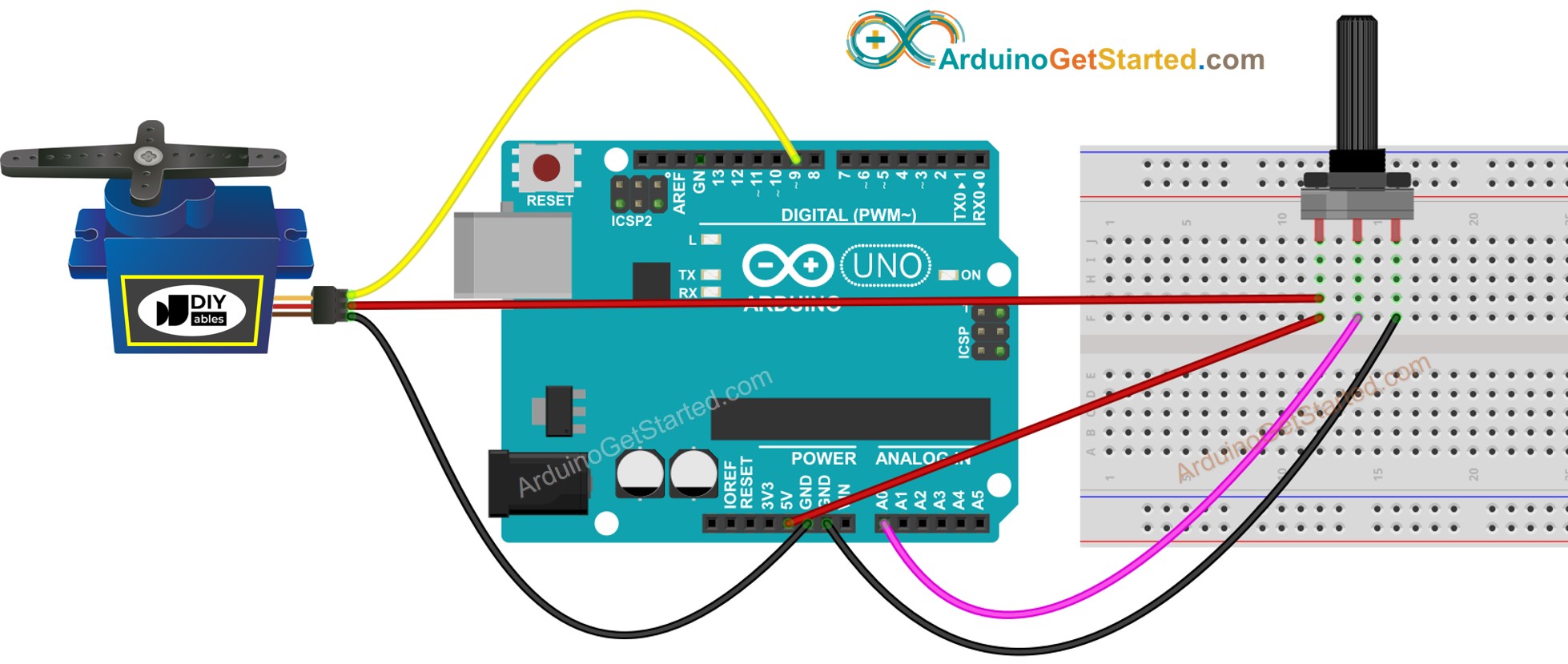

- #PROGRAM SERVO MOTOR ARDUINO TO ROTATE LEFT BY 30 DEGREE CODE#
- #PROGRAM SERVO MOTOR ARDUINO TO ROTATE LEFT BY 30 DEGREE BLUETOOTH#
On some servo motors, this is a Black wire. Generally 5-6 volts DC, but be sure to check first.
#PROGRAM SERVO MOTOR ARDUINO TO ROTATE LEFT BY 30 DEGREE BLUETOOTH#
Built-in WiFi and Bluetooth open the door to all sorts of remote control possibilities. The latter reason is why many people choose the ESP32 over an Arduino for controlling servo motors.
#PROGRAM SERVO MOTOR ARDUINO TO ROTATE LEFT BY 30 DEGREE CODE#
Arduino’s, for example, have no problem controlling servos and the Arduino IDE even comes with a built-in servo motor library and a few bits of sample code to get you started. Servos & ESP32Ĭontrolling an analog servo motor, which is the type of servo motors most commonly used by hobbyists, is a task that most microcontrollers have no problem performing. Myservo.As you’ll soon see, controlling a servo motor with the ESP32 is quite similar to using an Arduino, with the added advantage of the ESP32’s wealth of ports and capabilities.


Int pos = 0 // variable to store the servo position twelve servo objects can be created on most boards Servo myservo // create servo object to control a servo This example code is in the public domain. Thank you for your time and any help you can give me! I also tried using a PCA9685 module and PCA9685 arduino library with the servo and got basically the same results. Increments beyond 21 will cause the motor to just freeze and vibrate and sometimes it will rotate. It appeared that the largest number that successfully worked was 21. I tried adjusting the degree increments of the for loops in the sweep example. When I run the servo library sweep example the motor appears to work correctly. Using the Arduino Servo library, if I simply tell the motor to go to a position, I have to physically rotate the shaft until it is within a certain range of the intended position. I also powered the motor with 6 volts with an external battery and connected the grounds of the Arduino Uno and the battery. I have two servo motors that were purchased from amazon.


 0 kommentar(er)
0 kommentar(er)
